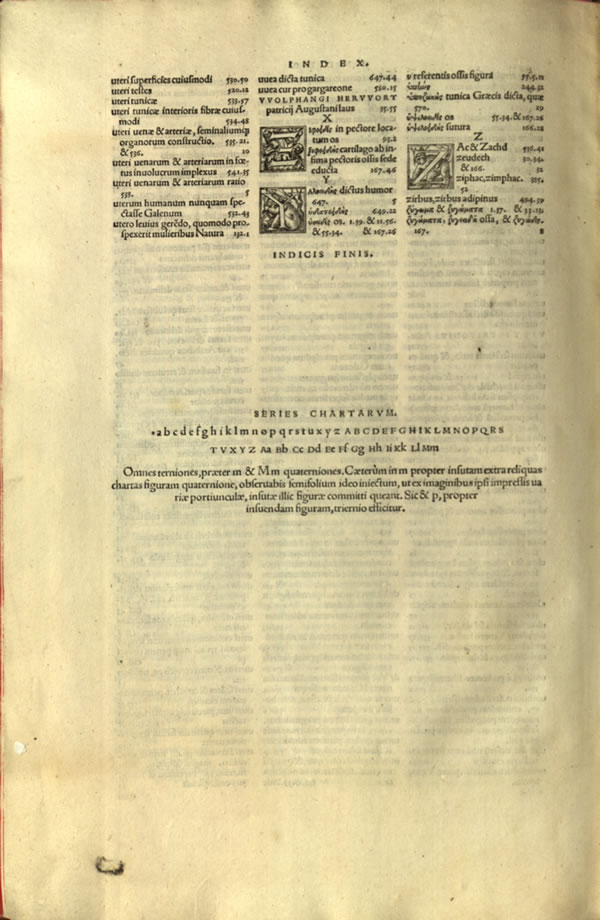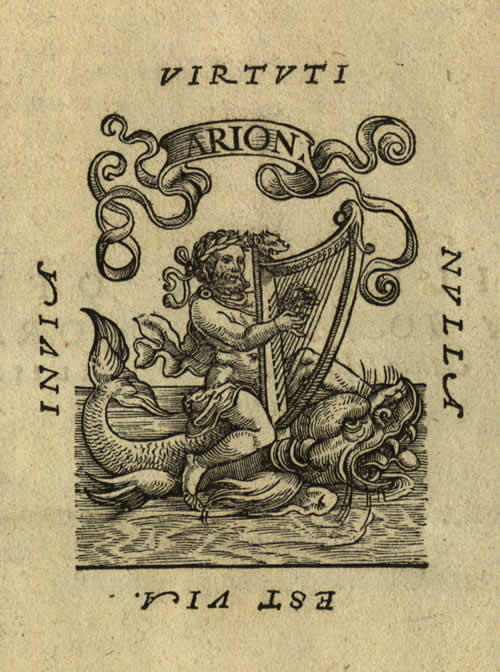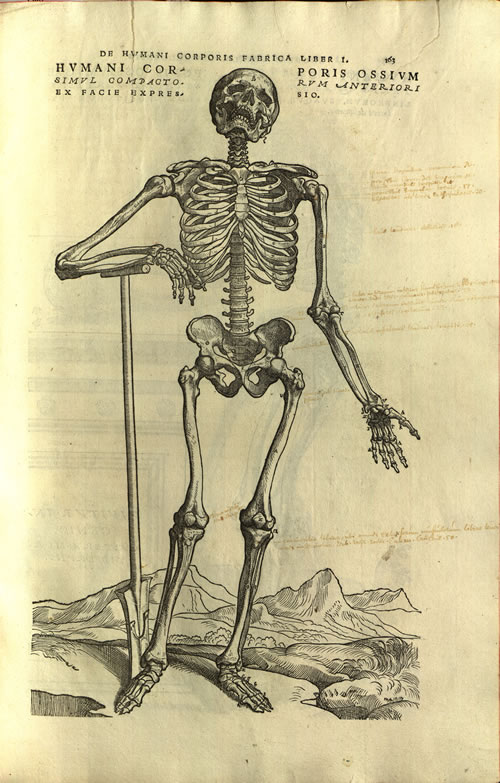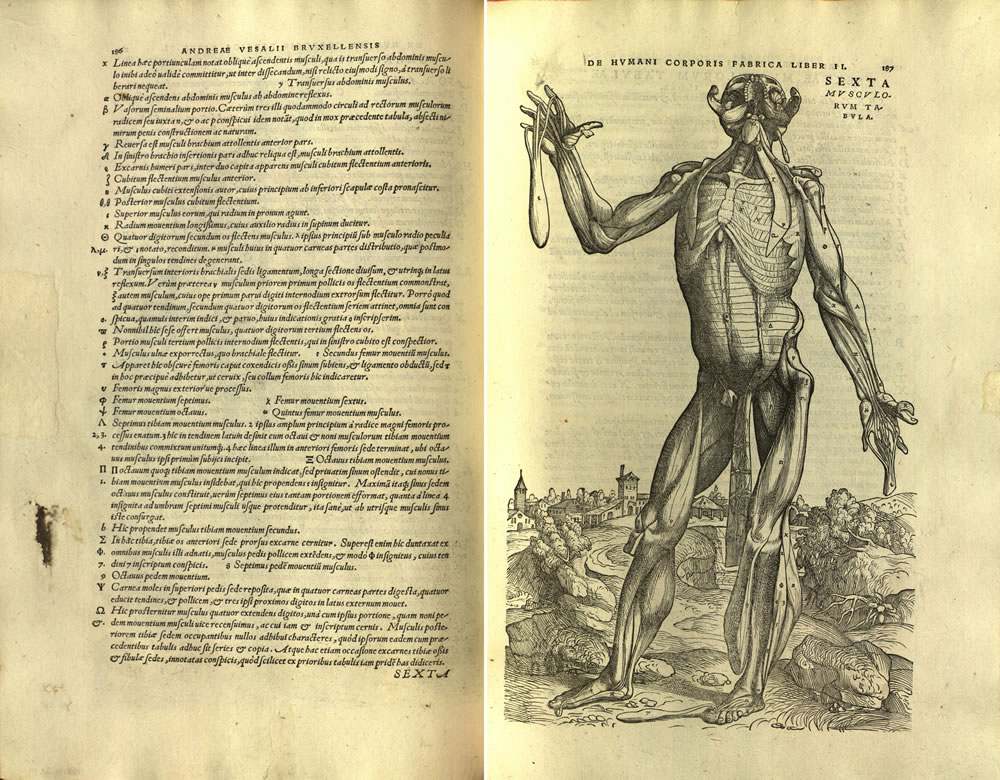Vesalius in Italy, and Writing the Fabrica
Vesalius’ medical education in Paris was cut short in 1536 by the outbreak of war between France and Charles V. As an imperial subject it was necessary for him to return to Louvain, where his baccalaureate thesis, a paraphrase of Book 9 of a medical text by the Arab physician Rhazes, was published in February 1537. In December of that year he took the examination for his medical degree at the University of Padua, which was arguably the preeminent center of medical education in Europe. Upon passing he was immediately given a lectureship in anatomy and surgery. Vesalius distinguished himself as a professor both by performing his own dissections rather than relying on the services of a surgeon/barber, and also by using drawings as a visual accompaniment to the procedure. In 1539 he published these drawings as the Six Tables.
Vesalius’ personal experiences with dissection led him to question to validity of Galen’s anatomical texts. These doubts came to the fore during a series of public demonstrations held at the University of Bologna in 1540, when the students at Bologna invited him to perform dissections as an accompaniment to the lectures of their teacher, Matteo Corti, who was a conservative Galenist. During the course of the demonstrations, which lasted some 15 days and used the bodies of three humans and six canines, Vesalius made frequent challenges to Galen’s assertions. His skepticism regarding Galen’s anatomy reached its apogee with the publication of the Fabrica in 1543, when Vesalius was only 28 years old.
De Humani Corporis Fabrica
The Fabrica is often lauded as being the first work to challenge the ancient authority of Galen while emphasizing the absolute necessity of performing one’s own dissections. While Vesalius was neither the first to question Galen, nor the first to advocate for the importance of first hand observation, his Fabrica was a particularly spectacular challenge to the anatomical status quo. Moreover, while Vesalius’ predecessors were willing to note errors in Galen, they believed that Galen’s anatomy was still fundamentally sound. Vesalius rejected that belief, and argued instead for a revision to anatomical knowledge based on the evidence of one’s own eyes, rather than attempting to reconcile observation with ancient authority.
Although the Fabrica challenges Galen, it is in many ways a Galenic text. Rather than organizing his text around the three cavities of the body in the order that had been established by Mondino, Vesalius followed Galen’s model by beginning with the bones. The abdominal and thoracic cavities, which Mondino discussed first, appear fairly late in Books 5 and 6. Vesalius also shared Galen’s teleological approach to the body, and the form he describes in the Fabrica is an ideal in which every part is suited to a specific purpose. In some ways the Fabrica can therefore be viewed as a tribute to the ideal Galenic anatomy, for Galen himself was well aware of the importance of observing the human form, and would have approved of Vesalius’ emphasis on doing one’s own dissections.
The Fabrica is as famous for the beauty of its illustrations as it is for its intellectual content, and there has been a considerable amount of interest in the identity of Vesalius’ artist or artists. While this question has never been answered with absolute certainty, it is likely that one of them was Jan Stephen van Calcar, who had previously worked with Vesalius on the Six Tables.
The Title Page
The title page of the Fabrica is one of the most iconic images in the history of medicine. Not only is it an artistic tour de force for both the artist and the blockcutter, it is rich in symbolic detail. At the center of the crowded scene Vesalius stands with his right hand in the bowels of the female cadaver he is dissecting. The fact that he is touching the body himself emphasizes the importance of hands-on experience and observation; that he is touching a female demonstrates his mastery over the deepest secrets of human anatomy, which Galen failed to do. The importance of the anatomist’s role is further emphasized by the fact that the rector and ostensor have been banished to a place of irrelevancy beneath the dissecting table.
Printing the Fabrica
The Fabrica was printed in the Swiss city of Basel at the printing house of Johannes Oporinus, a humanities scholar who had some familiarity with medicine. He learned Greek and Latin at a boarding school in Strasburg while still a young man, and after returning to Basel he worked as a manuscript copyist for the press of the highly accomplished printer Johannes Froben. In 1526 Paracelsus, the rather eccentric physician and alchemist who stood at the forefront of chemical medicine, arrived in Basel to lecture at the University, and Oporinus took a position as his secretary. Oporinus did not particularly care for Paracelsus – in a letter to Johannes Weyer dated 1555 he described his former master as a frequent drunkard and reveler – and he eventually left his service.
Oporinus was appointed professor of Latin at the University of Basel in 1533, but in 1539 a decree was passed that declared all members of the faculty must possess or secure a doctoral degree. He had no interest in filling this requirement, and chose instead to leave his position and dedicate himself fully to printing. He had ventured previously into the business with three friends in 1536, and after his departure from the University he became the leading printer in Basel.
While Oporinus’ press was comparable with other Basel printers in terms of typography and design, the correctness of its publications set it apart. Oporinus read the proofs for the majority of the texts put out by his press, and his humanist education allowed him to correct publications in Latin and Greek as well as the vernacular. He published multiple editions and translations of the classical authors, and his press was also important for religious reformers. In addition to the Fabrica, the most famous work to come off his press was probably the first Latin translation of the Koran, published in 1542. Somewhat ironically, Oporinus never published any works by Paracelsus.
There are a few reasons why Vesalius chose Oporinus instead of a Venetian printer. Basel was well positioned to distribute books to France, Germany, and Italy, and Vesalius was interested in reaching those markets. Another possible reason is that Vesalius already knew Oporinus. A second edition of Vesalius’ baccalaureate thesis was published in Basel in 1537 by Ruprecht Winter, one of Oporinus’ partners, and Oporinus had in all likelihood corrected the proof. Given this history, Oporinus was a logical choice for the printer of the Fabrica.
Vesalius sent the woodblocks for the Fabrica’s illustrations from Venice to Basel in 1542. He himself arrived in January 1543 with the printing privileges from the Venetian Senate, and assisted with the correcting. The Fabrica was finally completed in June 1543, and Vesalius departed in August to take a presentation copy to the Holy Roman Emperor Charles V, from whom he hoped to receive patronage.
Oporinus also printed the Epitome, which is often described as a digest version of the Fabrica. Although it was printed on larger paper than the Fabrica, it was much slimmer, and would have been more affordable for students.
The statement of signing at the end of the Fabrica was a guide to how the printed pages should be assembled – in this case there are 59 gatherings of three full sheets, with exception of the sheets labeled m and Mm, which are gathered in four.
Oporinus’ printer’s mark appeared for the first time in the first edition of the Fabrica. It was allegedly suggested to him by Vesalius. It depicts Arion, a Greek singer and poet who was kidnapped by pirates and rescued by dolphins after he leaped into the sea to escape. The motto invia virtue nulla est via – no path is impassable to virtue – is the words spoken by the Sibyl to Aeneas before his descent into the Underworld.
In Text Illustrations

While both Berengario and Charles Estienne included illustrations in their anatomical texts, Vesalius’ project far surpassed theirs in both anatomical detail and aesthetic beauty. The Fabrica contains more than 200 woodcut illustrations, which range from small depictions of single bones and organs to the large, exquisitely crafted skeletons and “muscle men” that are large enough to fill an entire page. Even the text itself is decorated. Some of the most striking images in the Fabrica are the historiated initials: large capital letters that set off different sections of a text and contain some sort of narrative scene. In the Fabrica, these scenes were often related to the practice of anatomy and dissection. This large capital I shows putti stealing a body that will then be anatomized.
Vesalius’ illustrations are not just notable for their physical beauty, but are significant for their integration with the surrounding text. The images are not shown in a vacuum, but are instead accompanied by a textual key that explains what the reader is seeing. A complete understanding of the human form is therefore achieved through the contemplation of both.
The 1555 Edition
Oporinus published a second edition of the Fabrica in 1555. This quality of the printing was improved in this new edition, and some of the historiated initials were redesigned.
One of the most obvious differences between the two editions is their title pages. Notice that the figure on the left clutching a column is now clothed, the skeleton standing at the head is holding a scythe instead of a pole, and the dogs on the lower right corner have been replaced by goats. The quality of the lines is also not as fine as that of the 1543 edition, and some detail has been unfortunately lost.
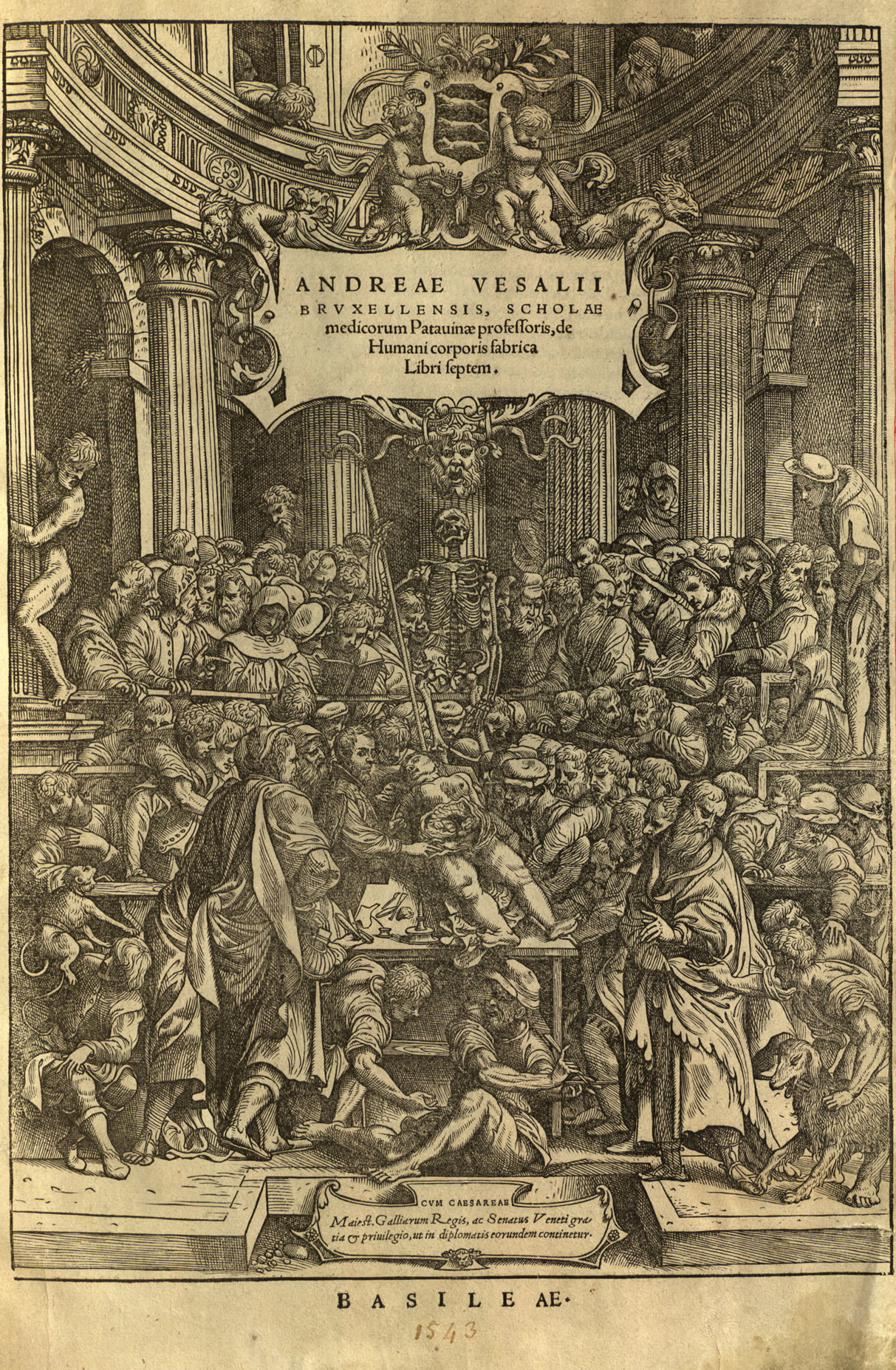

The 1568 Edition
While Oporinus’ press only published the first and second editions of 1543 and 1555, the Venetian press of Franciscus Francisci produced a smaller folio edition in 1568. The original woodcuts were reproduced in a diminished scale by Johannes Criegher, and the landscaped backgrounds were removed.



